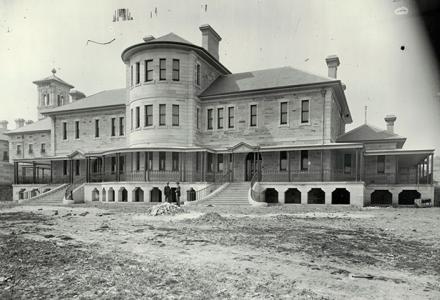Charles Bruce Campbell was born in 1890 at Yarralumla homestead, now the site of Australia’s government house but then the seat of the Campbell family’s pastoral empire. Doted on by his parents, he had the carefree childhood of the wealthy elite, and divided his time between his family’s sprawling properties and a leading Sydney boys school. First born son, and heir to the Campbell fortune, Charlie was a product of his time and his class; assertive, self-confident and full of a boyish enthusiasm for Empire.
When war broke out Charlie was keen to enlist. But not with the Australian army. Old families like his were accustomed to serving in British regiments. And despite his experience on the land, Charlie worshiped all things British. But there was another reason not to join the AIF. Several of Charlie’s peers had been successful in applying for a commission in the Royal Flying Corps. War in the air had an appeal ordinary soldiering did not; it promised glamour and adventure. Charlie set his sights on becoming a pilot and with that in mind paid his own way to England.
Using family connections, Charlie secured a commission within weeks of arriving in London. Flight was still in its infancy and the planes he would train in were flimsy, primitive and mechanically unreliable. But even then Charlie knew the Flying Corps would change the face of modern warfare. Despite the dangers—or perhaps because of them—he took to his new life with enthusiasm. In 1917, he found himself flying a twin seater De Havilland in France. In that year alone, over two thousand men of the Royal Flying Corps were shot down. The life expectancy of a new pilot was measured in months or even weeks.
That November Charlie’s squadron was attacked by an enemy force three times their number. Lieutenant Campbell’s aircraft was the last in the line and the first to be isolated. German pilots, led by Baron Von Richthofen (the ‘Red Baron’), swooped down from above and peppered his machine with bullets. The fuel tank caught ablaze and the De Havilland plunged towards the earth.
Officially Charlie was listed as ‘missing’. Despite reports that his aircraft had exploded mid-air, his mother Christie continued to write to him. Perhaps he had managed to land his crippled aircraft? Perhaps he was a prisoner of war in Germany? ‘Your machine was seen in flames & this awful nightmare still haunts me, [but] oh Charlie Boy… I get through the days hoping and hoping on news that you have been saved.’
As soon as peace was declared, three members of the Campbell family travelled through France in search of Charlie. They corresponded with the Red Cross and War Office demanding ‘reliable details’. They wrote time and again to the men with whom he served. Finding a grave near Cambrai marked C.B. Campbell RFC, they demanded it be opened.
Frederick Campbell died in 1928, over a decade after his son was lost. His will set aside an allowance of £10,000 a year, provision for a missing son who might one day return.
The Campbells’ story reminds us of the unresolved grief faced by the families of the Missing. It suggests many hoped against hope, often many years after the war had ended. Across Australia families left light shining in their doorways, and kept rooms the way long absent sons had left them. Without a body to bury there could be no finality to their grief. And no end to a lifetime of longing.
For full attribution of sources, suggestions for further reading and an extended version of the story itself see ‘Born on the wings of high adventure: Charles Campbell’ in Bruce Scates, Rebecca Wheatley and Laura James, World War One: A History in 100 stories (Melbourne, Penguin/Viking, 2015) pp. 151-153; 358.



